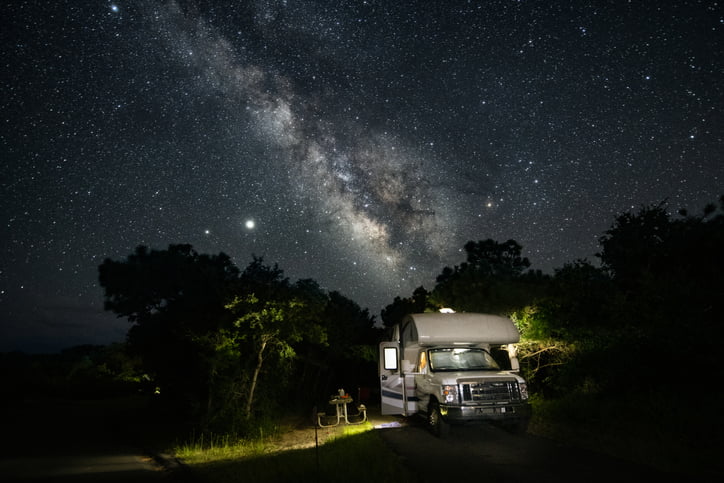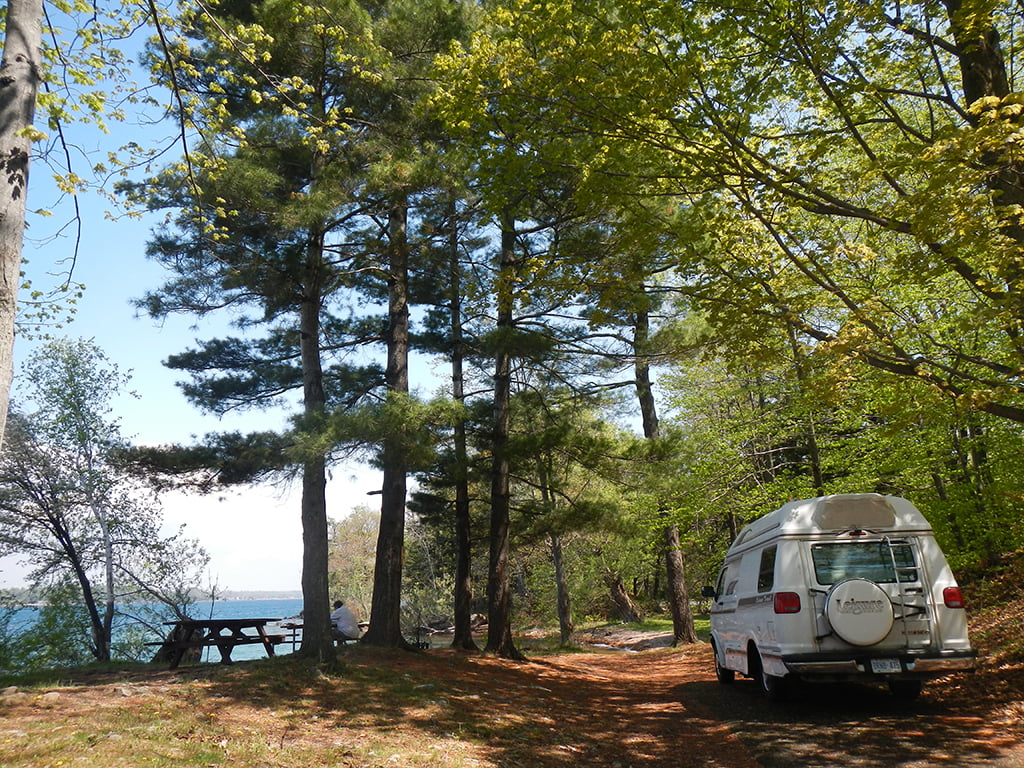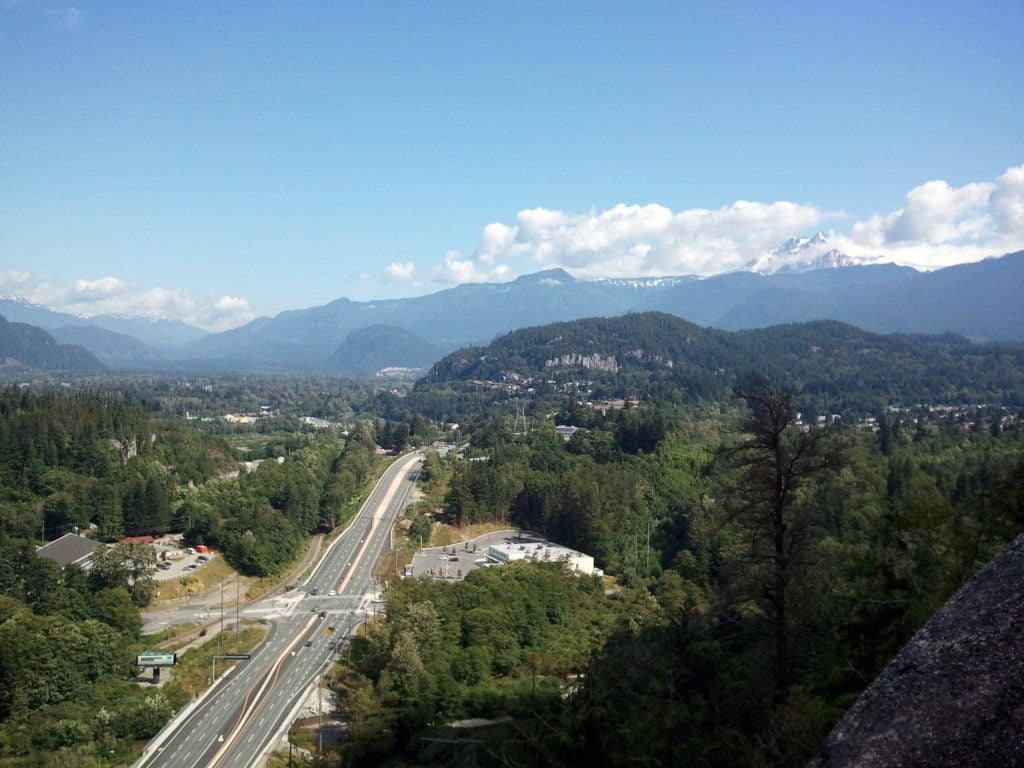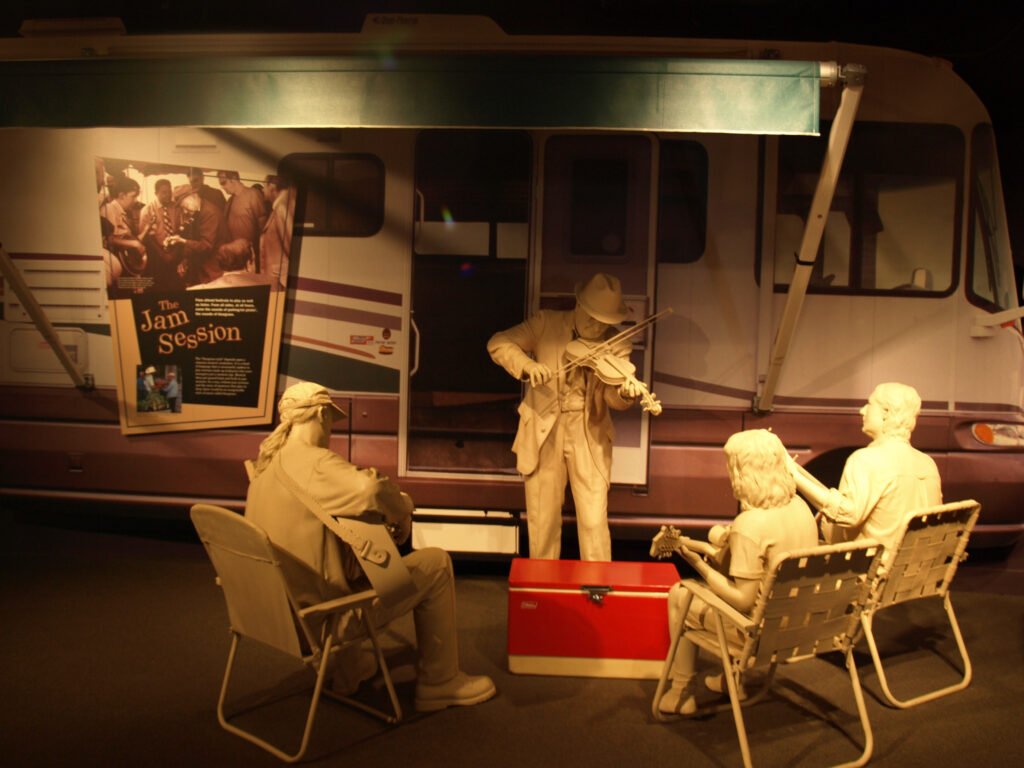Most astronomy and celestial tourism sites are away from cities and heavily travelled roadways. That’s the point – to get away from sources of light pollution, to gaze toward the heavens and to marvel at the splash of stars, planets and galaxies.
Often, these marvelous celestial tourism sites are just a short drive from major routes and the detour is well worth the effort. So, unfold your maps or fire up your GPS and find your way to these magnificent natural stops.
* Note that pandemic restrictions may be in place for some of these programs. Contact the parks or check websites for current schedules.
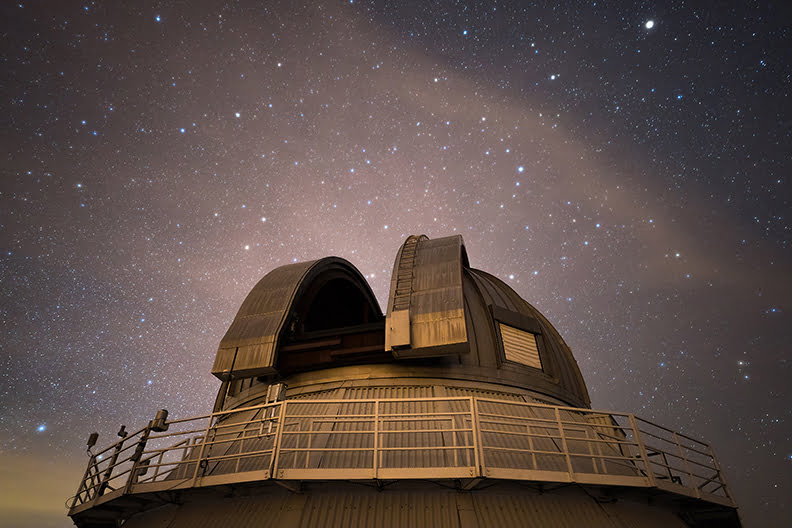
The doors of the observatory roof slide open and the telescope is lined up. Photo credit: Charles Dion
Mont-Mégantic Dark-Sky Preserve, Quebec
No matter how hard you try, you cannot touch the stars Mont-Mégantic Dark-Sky Preserve. Besides being trillions of kilometres away, the stars and the night sky are protected at this Quebec provincial park.
There are several telescope observatories at the park – the Popular Observatory is a multimedia experience and the smaller observatory on the roof of the park’s ASTROLab is open year-round at a lower elevation for public stargazing. Inside the ASTROLab visitor centre, the story of the universe unfolds through films, photos and multimedia displays. As the skies darken and the stars come into view, visitors climb the staircase to the observatory on the roof of the lab. The doors of the observatory roof slide open, the telescope is lined up and focused, and the celestial magic unfolds.
The observatories at the park sit atop small mountains, ringed by the dark forests of Quebec’s Eastern Townships. It’s the perfect spot to star gaze: it’s high up, the climate is dry and there is very little light pollution. These are the perfect conditions for exploring the solar system, especially with a boost from the observatory telescopes. Mont-Mégantic was named the world’s first International Dark-Sky Preserve (2007).

Camping at Mont-Mégantic. Photo Credit: Tourisme Cantons-de-l’Est
Camping:
Mont-Mégantic National Park has a selection of sites, about half with water and/or electricity services. Dogs are not allowed in the campground.
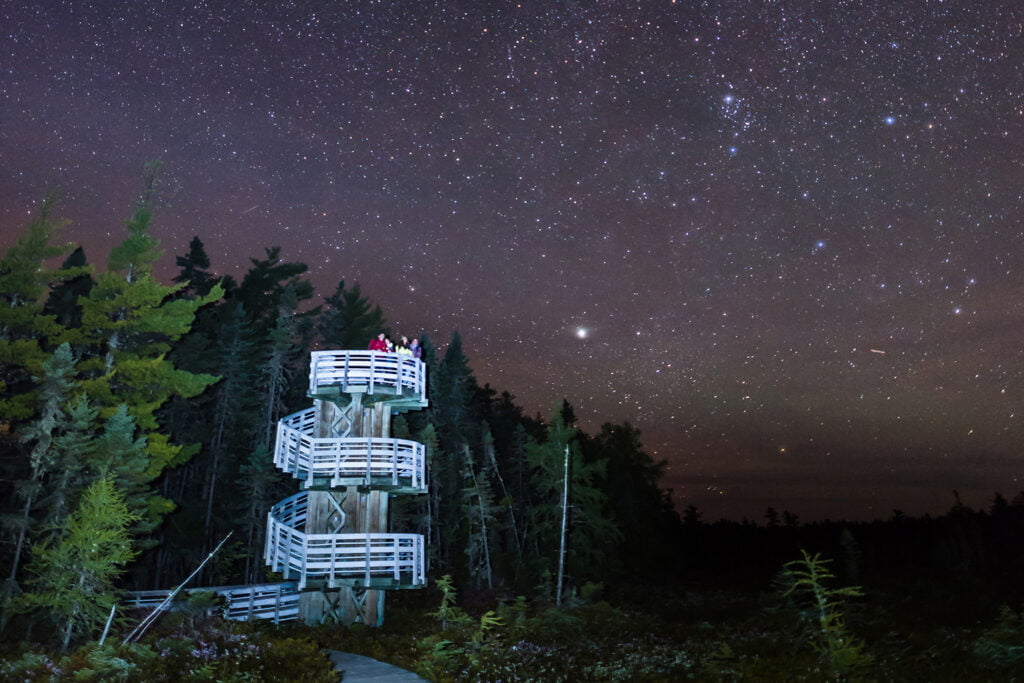
Visitors observing the stars atop the Bog trail tower, Kouchibouguac National Park, Dark Sky Preserve. Photo Credit: © Parks Canada/Nigel Fearon
Kouchibouguac National Park, New Brunswick
The Dark-Sky Preserve at Kouchibouguac National Park has stayed true to its mission: to reduce artificial light glare, increase the visibility and awareness of the night sky and help to reduce energy consumption. The coastal park protects the nocturnal habitat for creatures like bats, birds, insects and amphibians.
Dark-Sky Preserves make a special commitment to protect and preserve the night sky and to reduce or eliminate light pollution in all its forms. Some of the best celestial tourism sites at Kouchibouguac are La Source, Kellys Beach and Callanders Beach. Showing respect for the culture and history of the peoples who inhabited this land in the past, the park recognizes that these constellations were the same ones to guide the Mi’kmaq as well as the Acadians.
Kouchibouguac was designated a Dark-Sky Preserve by the Royal Astronomical Society of Canada (2009).
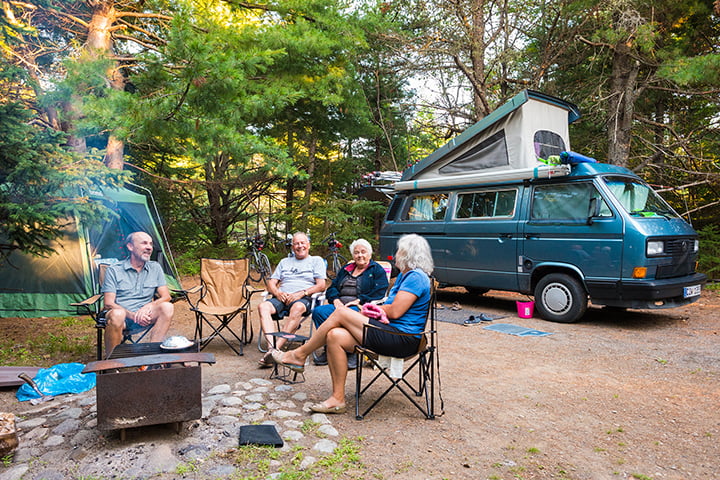
Trailer camping, Kouchibouguac National Park. Photo Credit: © Parks Canada/Nigel Fearon
Camping:
Kouchibouguac National Park was voted one of “The Best Campgrounds with Beaches in Canada” by Canadian Living magazine. The South Kouchibouguac campground has 311 sites, about two-thirds with full or partial hookups. There are comfort stations, kitchen shelters, fire pits, a dump station and Wi-Fi in part of the campground.
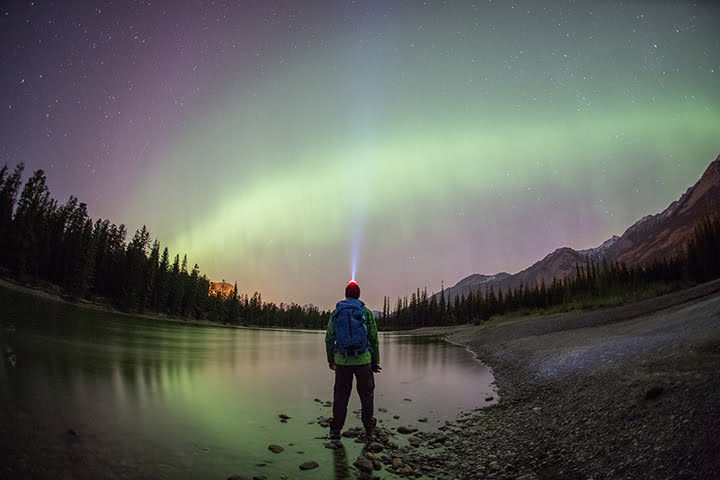
A man using his headlamp and looking at the night’s sky and northern lights. Photo Credit: © Parks Canada/Ryan Bray
Jasper National Park, Alberta
Jasper National Park is the second largest Dark-Sky Preserve in the world and the largest accessible Dark-Sky Preserve, which means getting there is easier than more remote locations. With a land area the size of Jamaica, there’s lots of opportunity to look upwards on a cloudless night and soak up a celestial show. Nighttime experiences include full moon night walks, when the glow of the moon creates an almost surreal setting.
In October, the park celebrates with special programming, including the annual Jasper Dark-Sky Festival with speakers, workshops, kid’s programs and nighttime star parties. Throughout the rest of the year, Parks Canada offers other special dark sky programming to highlight the importance of the park’s Dark-Sky status and to promote awareness of the impact of light pollution.
Those wanting to capture the show of stars and planets can sign up for a Night Photography Tour. The two-hour program covers techniques to capture the wonder of the night sky, including the northern lights. It’s a great way to experience the darkest skies in the Rockies.
Astronomy experts lead guided tours inside a small group-size domed theatre, followed by outdoor gazing to sight planets, stars, distant galaxies the aurora and more (weather conditions permitting).
Pyramid Island, Maligne Lake, Old Fort Point and the toe of Athabasca Glacier are four outstanding dark skyscapes within the park for excellent year-round viewing.
Jasper National Park was officially designated a Dark-Sky Preserve (2011).
Camping:
Jasper National Park has 1000+ sites with most suitable for RVs (full hookups and/or electrical) located in the Whistlers campground. Whistlers can accommodate most sizes of RVs. There is a shuttle service into the village of Jasper.
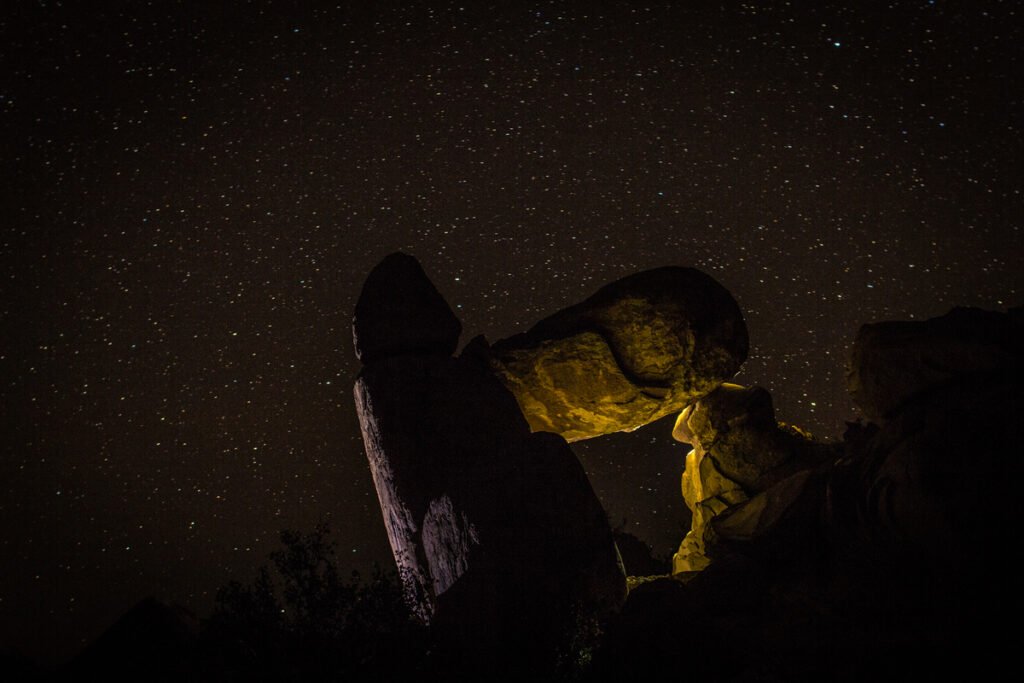
Balanced Rock at night. Photo credit: NPS/D. Lombardi
Big Bend National Park, Texas
Outside of Texas, Big Bend is a well-kept secret. The locals like to say, “Big Bend is not just untouched by man, it has been unspoiled by people.”
A million-plus acres of protected dark skies, river, desert and mountains offer solitude in some of the most heartbreakingly beautiful, uncluttered scenery in the United States. No one comes to Big Bend by accident – it’s the end of the road where the Rio Grande River embraces the dry Chihuahuan Desert and the volcanic Chisos Mountains. It’s also the only spot in North America where an entire mountain range is contained within the boundaries of a single park.
This sort of solitude is celestial catnip – a sparsely populated, big-sky land where you can still completely escape from man-made intrusions. Big Bend claims the least light pollution of any other national park unit in the lower 48 states. The sky is so dark that on a clear night you can lie on a blanket and watch the slow movement of the constellations across the desert sky. The occasional shooting star crosses the blackness like an exclamation point.
The park offers several night sky interpretive programs, including star parties and interpretive moonlight walks, all with information about the importance of dark night skies. Big Bend is an International Dark Sky Park (2012).
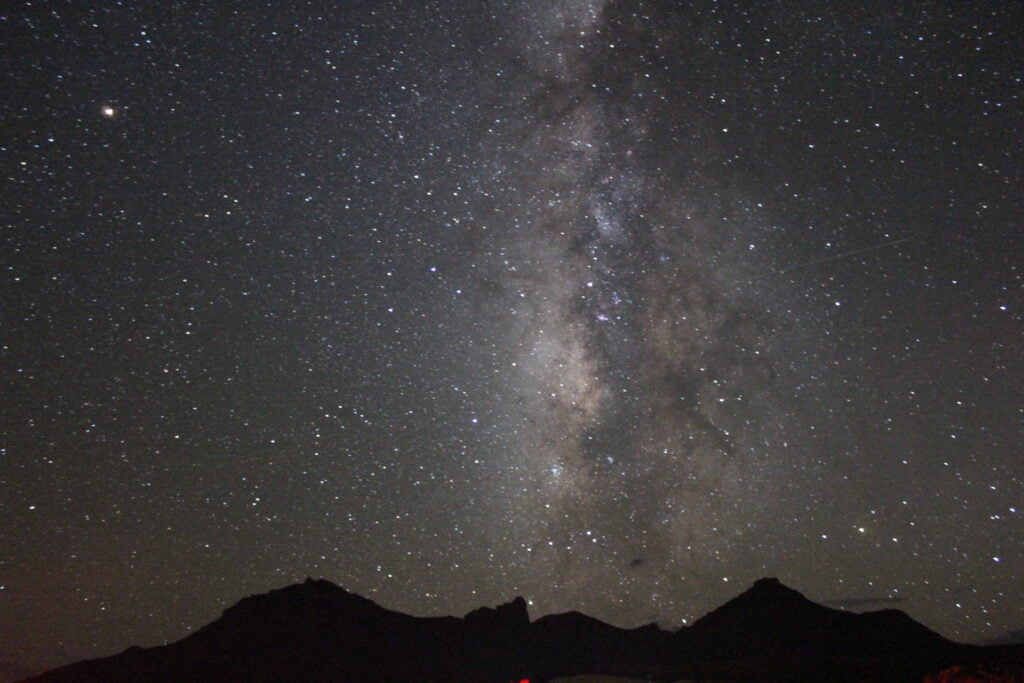
Photo credit: NPS/T. Jurando
Camping:
There are three developed National Park Service campgrounds with drinking water and restroom facilities. As well, a full hookup RV camping area is operated by the park concessioner, Forever Resorts. Reservations are required. There are also some designated primitive boondocking roadside campsites (although most are inaccessible to RVs and trailers).
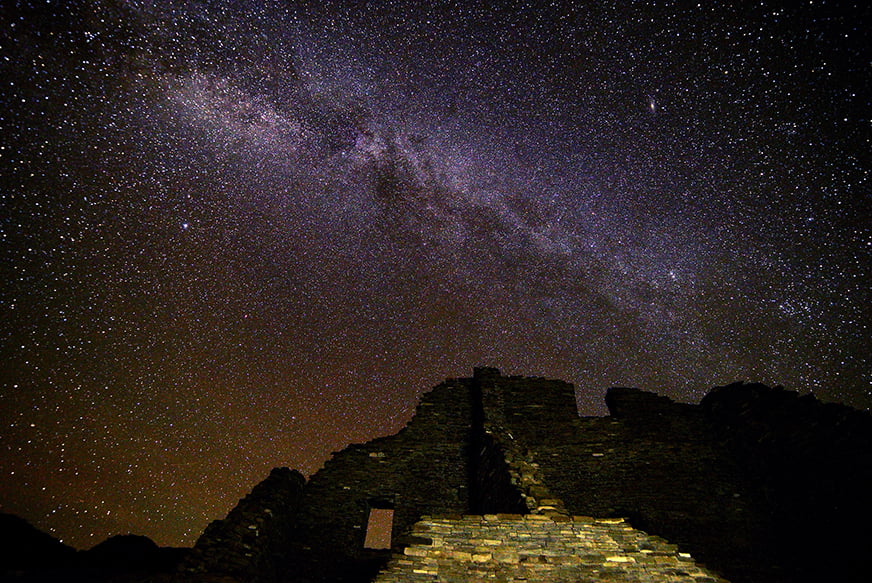
Chaco night with ruins. Photo credit: Li-Wei Hung/NPS
Chaco Culture National Historical Park, New Mexico
It would take a lot of effort to find a more out-of-the-way spot than Chaco Culture National Historical Park in northwest New Mexico. Thousands of years ago, all roads led to Chaco Canyon, the centre of trade and ceremony for the Puebloan peoples. These days, the famous park is considered off the beaten track and visitors must negotiate an often-bumpy drive to experience the ancient ruins. However, Chaco offers much more than fragile cultural sites and arid, but spectacular, hiking trails. When the sun goes down and things cool off in this high desert country the Chaco Night Sky Program is just heating up for the day (normally April through October; now on hiatus through the pandemic).
Since 1991, the Chaco Night Sky Program has provided an “archeoastronomy” focus – the constancy of the night sky forges a special link between modern-day park visitors and the ancient Chacoans, who were close watchers of the sky and of the seasons. These observations provided them with the timing of ceremonies, planting and harvesting – all central to their survival. Park volunteers conduct an astronomy program that combines interpretive talks, slide shows and night sky and solar observations. There is an observatory, several telescopes and advanced astronomy equipment. Volunteers come from all over the world to lead both nighttime programs and the daytime tradition of sun watching through a solar telescope. Chaco’s annual Astronomy Festival is normally held in September and bi-annual Star Parties in the dark months of May and October.
The brilliant skies of Chaco Canyon are so unique, that the park has designated the “night sky” as a critical natural resource deserving protection. This area is one of the darkest regions in North America; there is so little urban light pollution that it seems millions of stars stretch right to the horizon. Chaco is an International Dark Sky Park (2013).
Camping:
The Gallo campground located in rugged, rocky surroundings is open year-round and can accommodate RVs and trailers under 35-ft in length. There is no shade. The campground has water and restrooms with flush toilets, a dump station, but no showers or hook-ups. This is a remote location and there is no gasoline, auto repair, firewood, food or ice available in the park.
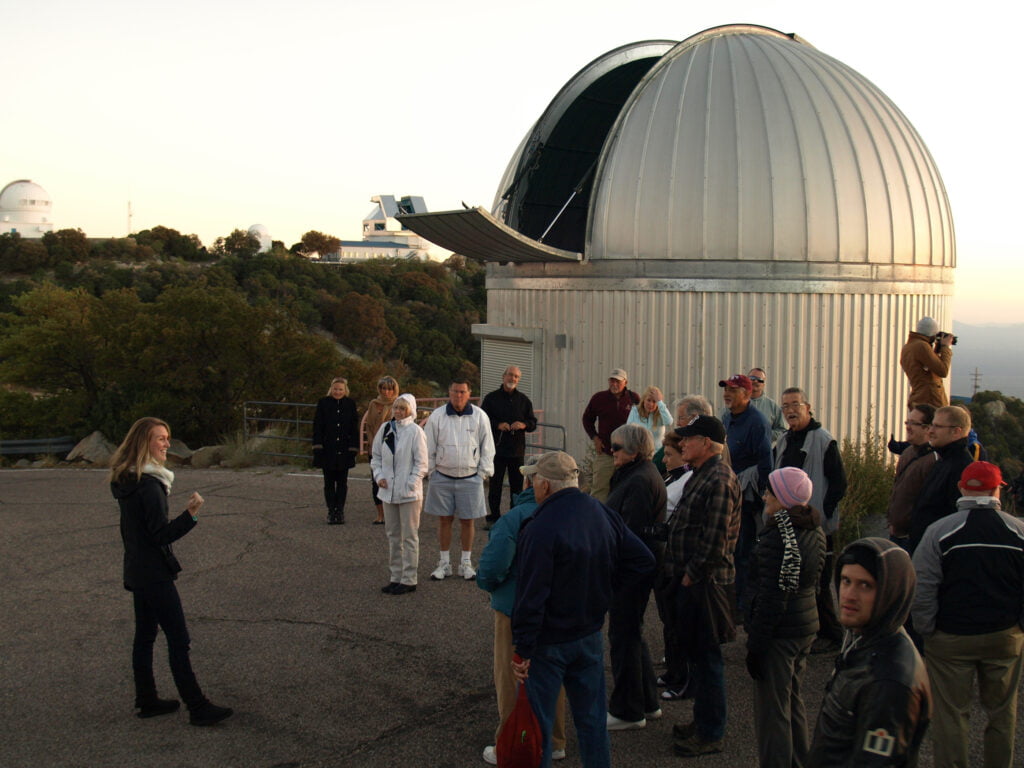
Photo credit: Josephine Matyas
Arizona: A Stargazer’s Mecca
With its wide-open spaces and clear air, Arizona boasts a staggering number of excellent spots to indulge in a little astronomy. Here are a few suggestions:
- Kitt Peak National Observatory near Tucson is operating under covid-closure at the moment, but as soon as regular programming resumes, it is well worth a drive to the top of the mountain for one of their excellent programs. Atop a 2,097-metre peak, the observatory houses the world’s largest collection of research telescopes. Visitors can join a nighttime interpretive program using high quality binoculars and large telescopes to watch the darkening skies, planets and constellations.
- SkyNights at the Mt. Lemmon SkyCenter uses two of the Southwest’s largest dedicated public viewing telescopes to observe the constellations and the wonders of the cosmos. Programs take place on Sky Island, near Tucson, at an elevation of 2,790-m.
- At Flagstaff’s Lowell Observatory – where Pluto was discovered in 1930 – the original photographic telescope is still operating and open to visitors. Guided tours (limited size groups) may include laser-guided constellation tours and access to some of the facility’s famous telescopes.
- The skies above 3,220-m Mount Graham in Arizona’s southeast corner are among the most clear and dark in North America. Check the website for reopening and tour details for the Large Binocular Telescope Observatory (LBTO) – a 16-storey optical telescope atop the Pinaleno Mountains, used to discover a galaxy cluster more than seven-billion light years away from Earth.
- Many Arizona state parks hold Star Parties and astronomy events. At Lost Dutchman State Park near Mesa, Park Rangers guide full-moon hikes and monthly astronomy events. Kartchner Caverns State Park holds popular public stargazing events to increase awareness of astronomy and of preserving dark skies for future generations.
Camping:
Open all year, the Tucson Lazydays KOA Resort has pull-through RV sites with full hookups. Amenities include pool, hot tub, bar & grill, fitness centre, three off-leash dog parks and complimentary Wi-Fi.
Most Arizona state parks are open year-round.
Kissimmee Prairie Preserve State Park, Florida
Many visitors to Florida are surprised to learn there are still swaths of protected, undeveloped lands that are away from urban light pollution, including Kissimmee Prairie Preserve State Park, just two hours south of Orlando.
At Kissimmee Prairie Preserve, campers can reserve an astronomy pad site for ideal stargazing. These celestial tourism sites have special restrictions: after dark, all lights must be red spectrum (try covering the lens of flashlights with red cellophane) and no campfires are allowed.
Visitors can see the brilliance of stars, planets and other celestial bodies, including both Jupiter and Saturn. Rocket launches from the space stations on the Atlantic coast and the orbiting International Space may also be visible. On clear nights, the delicate trail of the Milky Way can be spotted by the naked eye. Kissimmee Prairie Preserve was recognized as Florida’s first Dark Sky Park (2016).
Camping:
Kissimmee Prairie Preserve State Park’s 35 campsites can accommodate RVs up to 65-ft in length. All sites have water and electricity and there is a comfort station with showers and laundry facilities. Water-filling and dump stations are located in the park.
Dark Sky Viewing Tips
- Bring along a star chart or download a star gazing app like SkyView, Sky Safari, Sky Chart or Star Walk.
- A telescope is great, but a good pair of binoculars can also provide great viewing.
- Keep your lights off or very low to retain night vision. If you need a flashlight, cover the lens with red cellophane, as red light is less obtrusive than white light.
- If photos are on your wish list, bring a tripod and a camera with a wide-angle lens with a low aperture.
- The Royal Astronomical Society of Canada
- International Dark Sky Parks

